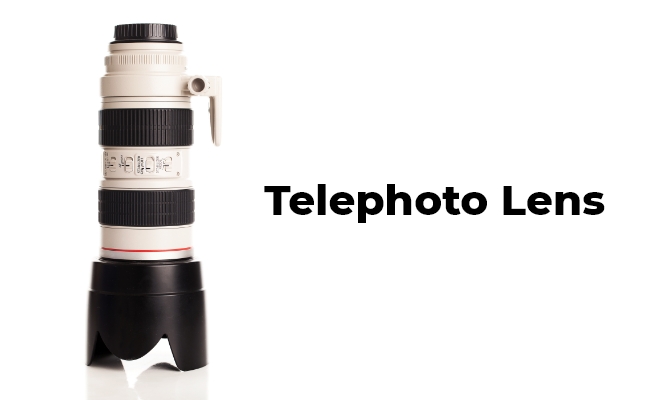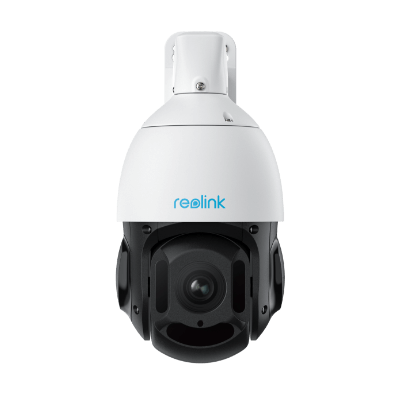Telephoto Lens: 2026 Full Guide

Telephoto lenses are a marvel in the world of cameras as they allow some distinct points of view and capabilities. These lenses go beyond the boundaries of ordinary camera lenses and take pictures with unbelievable sharpness from a considerable distance.
This article discusses telephoto lenses, compares them with wide-angle lenses, and contacts specialized uses such as security cameras. Comprehending these lenses helps us better understand their transformative effect on photography and surveillance.
What is a Telephoto Lens?
Telephoto lens is a unique type of lens that can capture objects from far away. The way it captures objects makes them appear much closer while maintaining good image quality. This effect is achieved through physically compressing space and perspective. These lenses have long focal lengths and are used in multiple photography styles, including sports and wildlife because they differentiate the subject being photographed by creating shallow depth with a bokeh effect.
Short telephoto lens
Short telephoto lenses are usually between 85mm and 135m in focal length and are popularly used for portrait photography. They give a flattering perspective and DOF. Images of these lenses have the subject emerging crisply against a softly blurred background. This focal range is perfect for close-up work and the detail it creates without distorting the subject.
Medium telephoto lens
These lenses range from approximately 135mm to 300mm in focal length. They are adaptable and broadly used in various subjects such as sports, even event and wildlife photography. Medium telephoto lenses enable cameras to make close-up shots at a moderate distance while keeping enough space from the subject. At the same time, they can capture significant details and create blurred backgrounds.
Super telephoto lens
Super telephoto lenses are designed to capture subjects from a large distance because of focal lengths longer than 300mm. These are useful when we cannot get the camera close to the object. These lenses are often bigger and heavier, so they usually need support from tripods or monopods when shooting.
Their high magnification allows them to see the distant scenes as if they were nearby. It makes them valuable for professional wildlife and sports photographers as well as for security cameras.
What is a Camera with a Telephoto Lens?
A camera with a telephoto lens can capture objects that are far away by making them appear visually nearer. Telephoto lenses are great for different camera types like:
What is a telephoto lens on a DSLR camera?
In DSLR cameras, telephoto lenses allow photographers to shoot at distances while maintaining image quality by enhancing DOF and low-light performance.
What is a telephoto lens on an iPhone camera?
iPhone telephoto camera lens helps users to zoom into subjects without having physically moved nearer. The lens also helps produce professional-looking portraits with blurred backgrounds.
What is a telephoto lens on a security camera?
A security camera with a telephoto lens is important in surveillance from far distances. It enables distantly happening activities to be viewed in close-up. Hence, it helps us identify the details, such as faces or license plates, while monitoring large areas such as parking lots or public spaces.
What Do Telephoto Lenses Do?
Telephoto lenses are some of the most important tools in various scenarios in photography and security when the subject is too far away.
What are telephoto lenses used for?
If you are wondering what telephoto lenses are used for, they are used in lots of applications. For example, these lenses are used in security to capture crisp details like a person's face or license plate in large areas. In wildlife photography, where it is impossible or hazardous to approach animals, these lenses are very useful.
Telephoto lenses are used in sports photography to catch fast-moving players and objects from a safe distance. They are also preferred in portrait photography because they add blurred backgrounds and give a flattering perspective. Furthermore, telephoto lenses are utilized in astrophotography since they can zoom into distant details.
Benefits of using a telephoto lens
Now that you know what telephoto lenses are used for, discuss some major benefits offered by these lenses when used instead of other options:
- Telephoto lenses focus only on the object and blur out the background and foreground of the image.
- They are ideal for capturing fast-moving objects while maintaining crisp detail in sports.
- You can increase or decrease the details in the image without moving the lens from its position.
- Telephoto lenses are beneficial for capturing objects from far away.
Telephoto Lens vs. Wide Angle Lens: What's the Difference?
Today, the world of camera lenses has evolved a lot, and we have multiple lens choices for multiple use cases. That's why we need to compare different lenses before opting for the right one. When we need to capture distant objects for security, wildlife photography, or any other reasons, the most common options include:
- Wide angle
- Telephoto lenses
- Zoom lenses
So, here we will compare telephoto lenses vs wide-angle lenses to determine what type of functionality either one offers.
- Focal length: The first difference is in their focal length, where telephoto lenses start at over 75mm while wide-angle lenses go to a maximum of 35mm.
- Field of view: Telephoto lenses provide a narrow FOV, meaning they will only capture a small frame around the main object. Wide-angle lenses, on the other hand, have a broader FOV.
- Depth of field: The DOF in telephoto lenses is shallow, which gives a bokeh effect by blurring the background. Wide angles have a deeper DOF to ensure clarity in bigger frames.
- Portability: Wide-angle lenses are compact and easily portable, while telephoto lenses are not that portable. Telephoto lenses are big and bulky.
- Perspective: Telephoto lenses compress the scene, adding more detail and depth to the perspective of the image. Wide angles, on the other hand, exaggerate distances, which can cause perspective distortion.
Security Camera with Telephoto Lens Recommendation
Suppose you have a use case where you want to cover a large area with a security camera. In that case, you must use cameras with telephoto lenses or those that can cover bigger areas while maintaining clarity in results. Reolink offers products with these capabilities and a lot more.
Best Telephoto-Lens Security Camera with Optical Zoom - Reolink RLC-823A 16X
The Reolink RLC-823A 16X is a PoE IP camera with Smart 4k capabilities. It comes with an optical zoom capacity of up to 16x and has rapid pan/tilt performance. It is auto-tracking, so moving targets won't slip away from it.
It provides night vision up to 262ft, two-way audio, and person-pet vehicle detection. Its strong design incorporates ip66 weatherproofing for various environments. So, it is a suitable option for multiple use cases in diverse situations requiring advanced surveillance features.
Smart PTZ PoE Camera with Spotlights
4K 8MP Ultra HD, Person/Vehicle Detection, 16X Optical Zoom, Auto Tracking, Manual Pan & Tilt, Two-Way Audio, 190ft Night Vision, Live View.
Best Alternative to Security Camera with Telephoto Lens - Reolink Duo 3 PoE
If you can find a better security camera with telephoto lens to focus on finer details, you can consider a device with higher resolution and wide-angle lens. Reolink Duo 3 PoE is a 16 MP UHD dual-lens security camera providing a 180° panoramic view. It comes with double image stitching technology, which uses two lenses to provide one bezel-free. It's a full-scale surveillance system with color and black-and-white night vision.
This camera includes a motion tracking feature, spotlight deterrent, and siren. It also has PoE, which allows it to be easily installed and supports different storage options, thereby adding more value in the case of security applications.
Groundbreaking 16MP Dual-Lens PoE Camera
16MP UHD, Dual-Lens, Motion Track, 180° Wide Viewing Angle, Power over Ethernet, Color Night Vision.
FAQs
1. How far can a telephoto lens see?
A telephoto lens has a range that is determined by its focal length. Greater focal lengths mean the lens can see farther. For instance, a 300mm lens can be used to photograph distant wildlife or sports action. The distance depends on the lens quality and atmospheric factors, including light and clarity.
2. What is the difference between a zoom lens and a telephoto lens?
A zoom lens provides varying focal lengths to photographers who can adjust the frame without moving around. A telephoto lens is a zoom lens with a long focal length meant for distant subjects. Additionally, not all zoom lenses are telephoto because some range between wide to mid-range focal lengths.
3. What is the effect of a telephoto lens?
The effect of a telephoto lens is that perspective becomes compressed and flattened, so distant objects appear closer and bigger. This effect improves subject isolation and provides a shallow DOF to capture portraits or wildlife photography. They also eliminate distractive background, directing attention towards the main subject, which often results in a beautiful bokeh.
Conclusion
Telephoto lenses transform the way we perceive and capture our world. Be it in professional photography, smartphones, or security surveillance, their ability to make the far away closer is second to none. The practical applications of such lenses with products like Reolink Duo 3 PoE and RLC-823A show how beneficial they are for surveillance. Overall, telephoto lenses are essential in the field of visual storytelling and security.
Search
Subscribe for the Latest Updates
Security insights & offers right into your inbox


